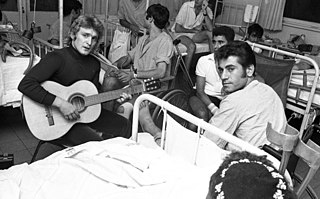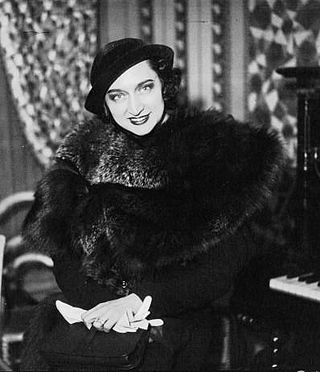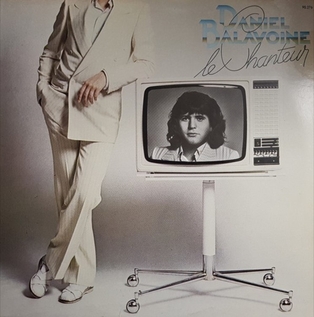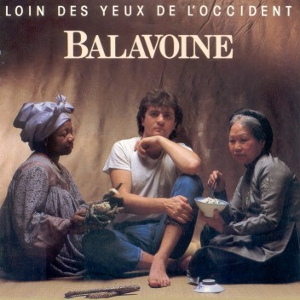
Francis Christian Cabrel is a French singer-songwriter, composer and guitarist. Considered one of the most influential French musical artists of all time, he has released a number of albums falling mostly within the realm of folk, with occasional forays into blues or country. Several of his songs, such as "L'encre de tes yeux", "Je l'aime à mourir", "Petite Marie", "La Dame de Haute-Savoie", "Encore et encore", "Il faudra leur dire", "Sarbacane", "C'est écrit", "Je t'aimais, je t'aime, je t'aimerai" and "La corrida", have become enduring favourites in French music. Since the start of his career, Cabrel has sold over 25 million albums.

Daniel Xavier-Marie Balavoine was a French singer and songwriter. He was hugely popular in the French-speaking world in the early 1980s; he inspired many singers of his generation such as Jean-Jacques Goldman, Michel Berger, who was his closest friend, as well as the Japanese pop-rock group Crystal King. Balavoine was a part of the original cast of the rock opera Starmania in 1978, which was written by Berger.

Gaston Ghrenassia , known by his stage name Enrico Macias, is a French singer, songwriter and musician of Algerian Jewish descent.

Raymond Berthiaume was a Canadian jazz singer, musician, producer and composer from Quebec, Canada.
Henri Jules Louis Jeanson was a French writer and journalist. He was a "satrap" in the "College of 'Pataphysics".

Catherine Ferry is a French singer. In 1976, at the Eurovision Song Contest, Catherine Ferry represented France with the song "Un, deux, trois". She ranked second in the contest. Among the backing vocalists was Daniel Balavoine, who wrote the B side "Petit Jean". She worked and was produced mainly by Daniel Balavoine a famous French singer who wrote nearly 30 songs for her.

Vendeurs de larmes is the sixth studio album by French singer Daniel Balavoine, that was released in April 1982 and was a success with sales of over 600 thousand copies in France. It was also a new revival of French pop rock, and the single "Vivre ou survivre" from the album proved to be one of the greatest hits for Balavoine.

Roman-photos(Fotonovelas) is the debut album by French rock musician Alain Bashung, released in 1977 through Barclay Records. The first issues of the album simply bore the artist's name.
Hollywood Girls : Une nouvelle vie en Californie, or simply Hollywood Girls, is a French soap opera created by Alexandre dos Santos, Jérémy Michalak, and Thibaut Vales for NRJ12. The series features an ensemble cast and follows a groups of French peoples who decided to start a new life in California, but their life is quickly disrupted by the diabolical Geny G and her husband, the Dr. David Moretti.

Charles Aznavour, released in December 1961, is the eighth French studio album by the French-Armenian singer Charles Aznavour. This album is also known under the title "Il faut savoir". It was in TOP 10 charts in France, Italy, Belgium, Israel and other countries. The album includes songs by Charles Aznavour, Georges Garvarentz, Michel Legrand, Eddie Barclay and others.

"Gaby oh Gaby" is a song first published by Alain Bashung. Written by Boris Bergman with music by Bashung, it was initially published as a single in 1980 on Philips, with "Ell' s'fait rougir toute seule" as the B-side. The single became a huge hit in France, and therefore the song was included on the album Roulette russe in a reissue nicknamed Nouveau couplage, and then on the CD reissue of the next album, Pizza.

Daniel Bevilacqua, better known by the stage name Christophe, was a French singer and songwriter. He was born in the Paris suburb of Juvisy-sur-Orge, to an Italian father.

Lys Gauty was a French cabaret singer and actress. Her most significant work came in the 1930s and 1940s as Gauty appeared in film, and recorded her best-known song, "Le Chaland qui passe", which is an interpretation of an Italian composition.
Moravagine is a 1926 novel by Blaise Cendrars, originally published by Grasset. It is a complex opus with a central figure, the eponymous Moravagine, like a dark persona of the author which he gets rid of through writing. Its genesis took a decade and Cendrars never stopped working on it. In 1956, the author somewhat rewrote the text, added a postface and a section titled "Pro domo: How I wrote Moravagine". In its ultimate revision, Cendrars says the book is definitely incomplete, as it was meant to be a preface to a "complete works of Moravagine" that are not there.
"Je ne suis pas un héros" is a song by French singer Johnny Hallyday, released on his 1980 album À partir de maintenant. It was written by fellow singer Daniel Balavoine who went on to also record and release his own version.
Renée Claude was a Canadian actress and singer who was known as an interpretive singer, particularly of songs by Stéphane Venne, Michel Conte, Georges Brassens and Léo Ferré.

Zoé Clauzure is a French child singer best known for winning the 2023 Junior Eurovision Song Contest. Previously, in 2020, she had reached the semifinals of the seventh season of the French version of The Voice Kids.

Le chanteur is the third album by French singer Daniel Balavoine, released in June 1978 under Riviera-LM, a subsidiary of Barclay. The album was commercially successful, selling over 800 thousand copies.

Face amour / Face amère is the fourth album by French singer Daniel Balavoine, released in October 1979. The album was credited with Balavoine's backing group Clin d'Œil who had accompanied him since his second album Les aventures de Simon et Gunther....

Loin des yeux de l'Occident is the seventh studio album by French singer Daniel Balavoine, released in October 1983.















